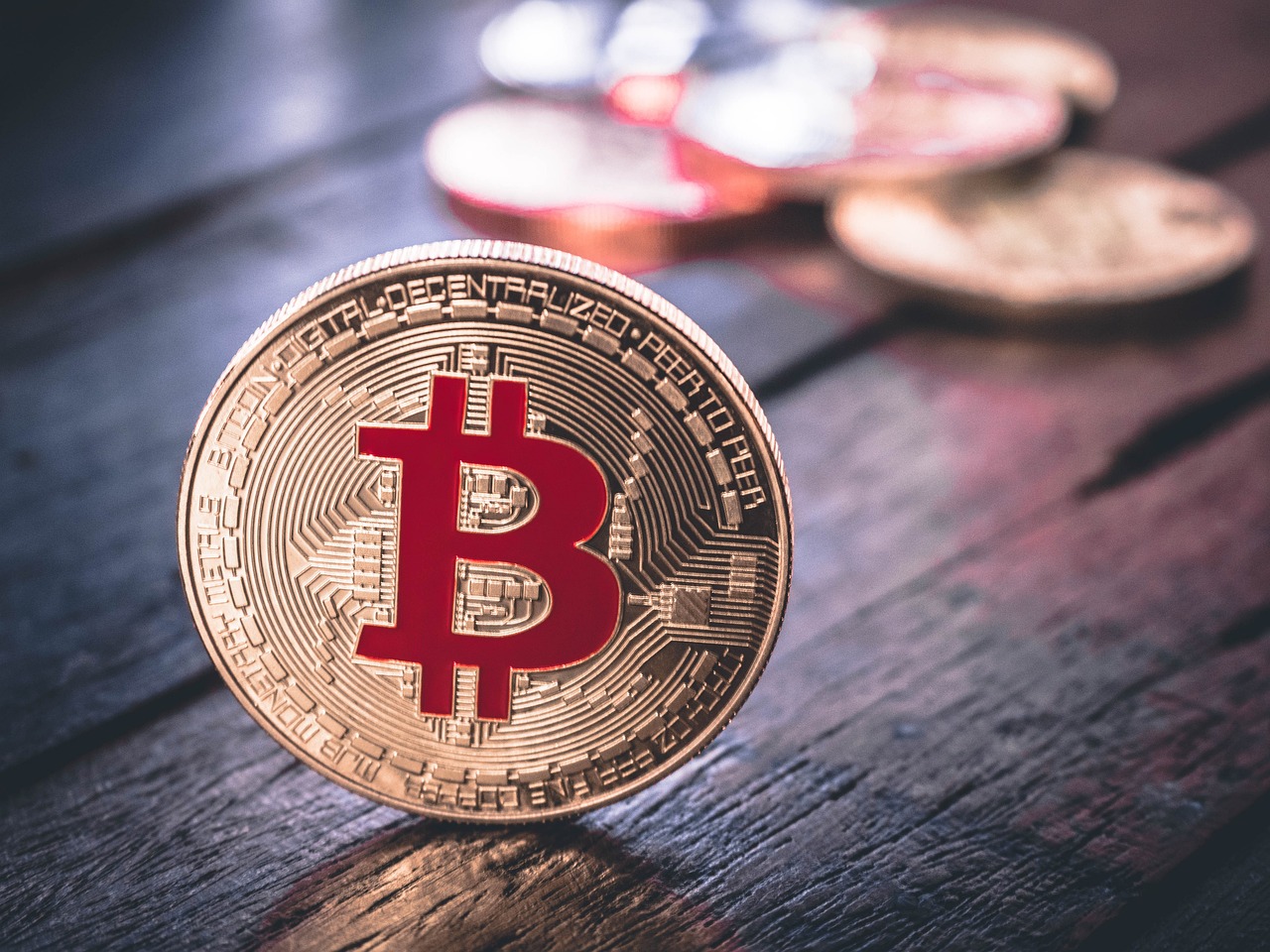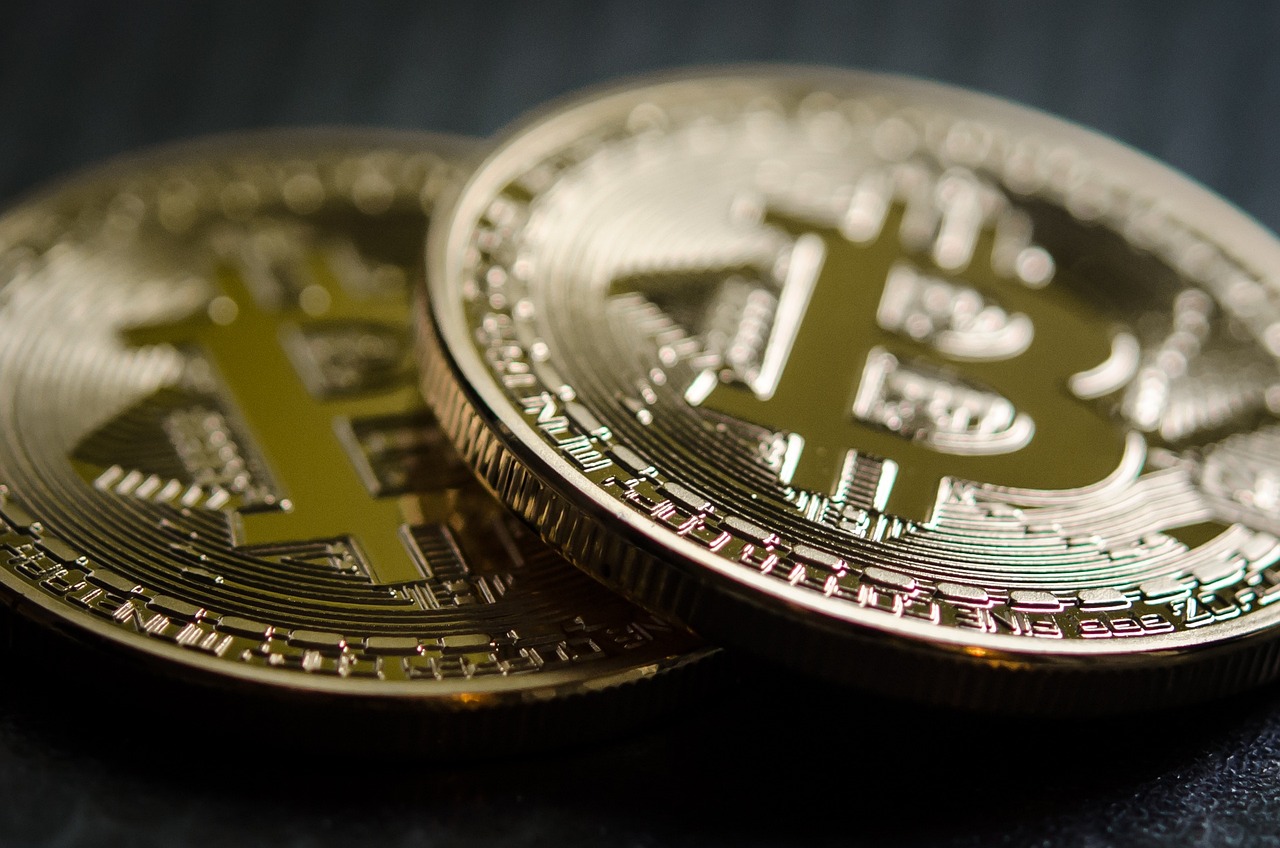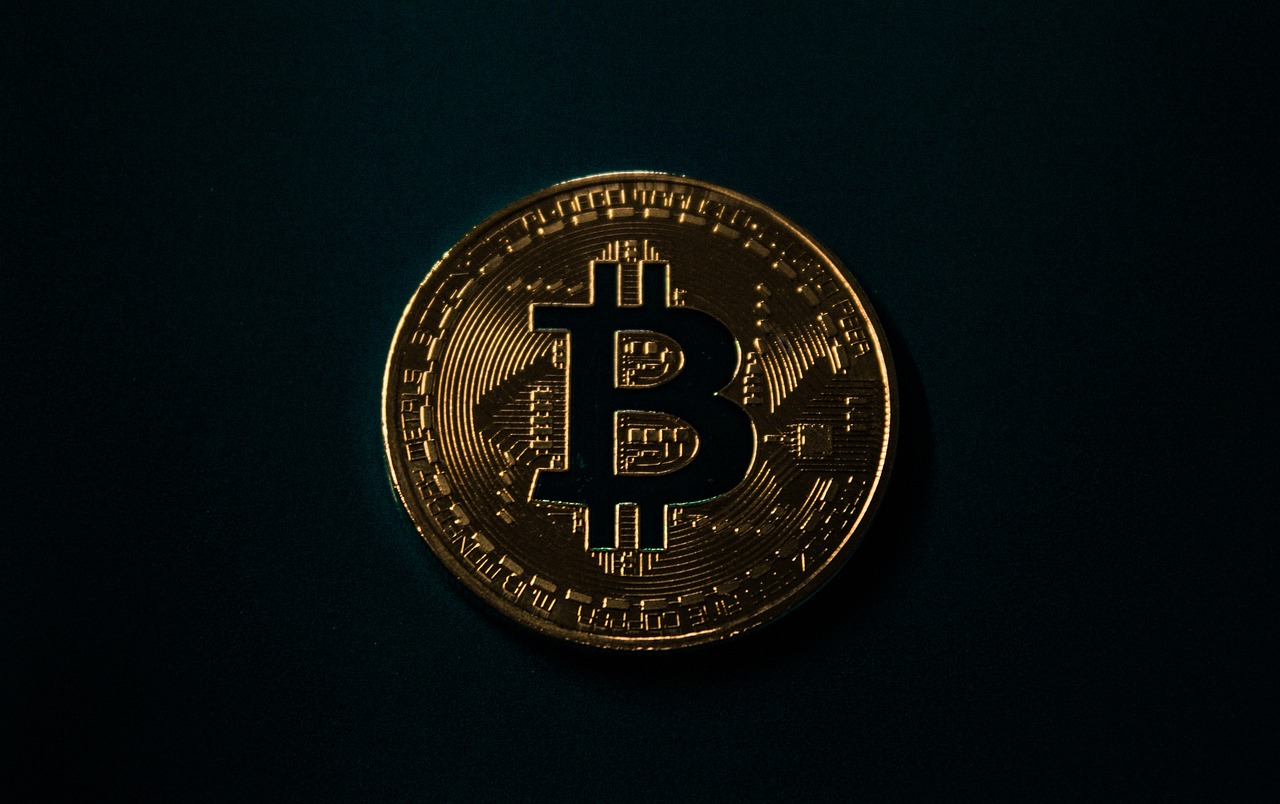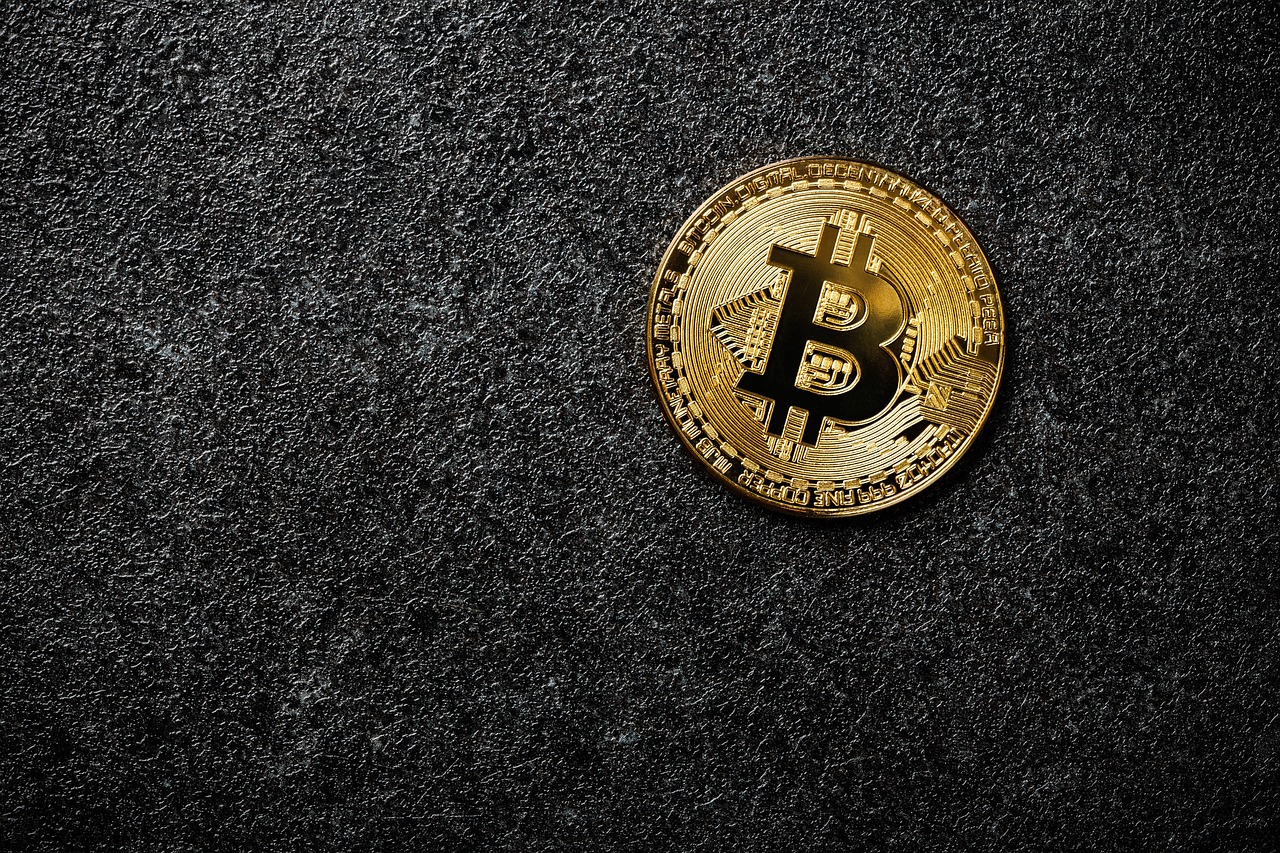Understanding the Legal Status of Stablecoins
In recent years, the rise of stablecoins has sparked a significant conversation in the financial and regulatory realms. As digital currencies designed to maintain a stable value, stablecoins are pegged to traditional assets like fiat currencies or commodities. This innovative approach aims to combine the benefits of cryptocurrencies—such as speed and security—with the stability of traditional money. But as the popularity of stablecoins grows, so does the scrutiny from regulators worldwide. Understanding the legal status of these digital assets is crucial for users, issuers, and investors alike.
Stablecoins serve a unique purpose in the cryptocurrency ecosystem. Unlike their more volatile counterparts, such as Bitcoin or Ethereum, stablecoins offer a level of predictability that appeals to users looking for a safe harbor in the stormy seas of crypto trading. They can be used for various applications, including remittances, trading, and as a means of preserving value. The three primary types of stablecoins include:
- Fiat-Collateralized Stablecoins: These are backed by a reserve of fiat currency, typically held in a bank account.
- Crypto-Collateralized Stablecoins: These are backed by other cryptocurrencies, often over-collateralized to account for price volatility.
- Algorithmic Stablecoins: These maintain their value through algorithms that control supply and demand, rather than being backed by physical assets.
As stablecoins continue to gain traction, the regulatory frameworks governing them are evolving. Different countries are taking distinct approaches, which can create a complex landscape for issuers and users. In the United States, for instance, stablecoins are subject to oversight from multiple regulatory bodies, including the Securities and Exchange Commission (SEC) and the Commodity Futures Trading Commission (CFTC). This multifaceted regulatory environment can lead to confusion and uncertainty for those involved in the stablecoin market.
Moreover, state-level regulations further complicate the situation. Each state may impose its own rules, affecting how stablecoins can be issued and used. For example, some states may require stablecoin issuers to obtain specific licenses or adhere to certain consumer protection laws. This patchwork of regulations can create significant hurdles for businesses operating in this space.
On a federal level, the increasing popularity of stablecoins has prompted lawmakers to propose new legislation aimed at providing clearer guidelines. These proposed regulations could have profound implications for the future of stablecoins, potentially establishing a more uniform framework that could facilitate their growth and adoption. However, the outcome of such legislative efforts remains uncertain, and stakeholders must stay informed about potential changes.
Internationally, the regulatory landscape is just as varied. Countries like the European Union, China, and Japan are each crafting their own rules regarding stablecoins, reflecting their unique economic environments and policy priorities. For instance, while some nations are embracing stablecoins as a means of enhancing financial inclusion, others are wary of their potential to disrupt existing financial systems. Understanding these international perspectives is essential for anyone looking to navigate the global stablecoin market.
As we look to the future, the legal status of stablecoins is likely to evolve further. With ongoing discussions among regulators, industry leaders, and the public, the path forward may be filled with both challenges and opportunities. Stakeholders in the stablecoin ecosystem must remain agile and informed to adapt to these changes effectively.
- What is a stablecoin? A stablecoin is a type of cryptocurrency designed to maintain a stable value by being pegged to traditional assets like fiat currencies.
- How are stablecoins regulated? Regulation varies by country, with some nations adopting strict frameworks while others are still developing their policies.
- What are the types of stablecoins? The main types include fiat-collateralized, crypto-collateralized, and algorithmic stablecoins.
- What compliance challenges do stablecoin issuers face? Issuers must navigate anti-money laundering (AML) and know your customer (KYC) requirements, among other regulations.
- What does the future hold for stablecoins? The future is uncertain, but ongoing regulatory discussions will likely shape the legal landscape for stablecoins.

What are Stablecoins?
Stablecoins are a unique breed of digital currencies that aim to provide the best of both worlds: the stability of traditional fiat currencies and the innovative features of cryptocurrencies. Imagine a bridge connecting the old financial world with the new, allowing users to traverse effortlessly between the two. These digital tokens are designed to maintain a stable value by pegging them to traditional assets, such as the US dollar, Euro, or even commodities like gold. This stability is crucial in a market often characterized by wild price fluctuations, making stablecoins an attractive option for both investors and everyday users.
So, how do stablecoins function within the broader cryptocurrency ecosystem? At their core, they serve several important purposes:
- Transaction Efficiency: Stablecoins facilitate faster and cheaper transactions compared to traditional banking systems.
- Hedging Against Volatility: Investors can park their assets in stablecoins during market downturns, protecting their investments from drastic price swings.
- Access to Decentralized Finance (DeFi): Stablecoins are often used as collateral in DeFi platforms, enabling users to borrow, lend, and earn interest.
There are several types of stablecoins, each with its own mechanism for maintaining stability:
| Type | Description | Examples |
|---|---|---|
| Fiat-Collateralized | Backed by a reserve of fiat currency, ensuring that each stablecoin is redeemable for a specific amount of the fiat. | USDC, Tether (USDT) |
| Crypto-Collateralized | Backed by other cryptocurrencies, often over-collateralized to absorb price volatility. | Dai |
| Algorithmic Stablecoins | Use algorithms to control supply and demand, adjusting the number of coins in circulation to maintain price stability. | Ampleforth, TerraUSD |
Each type of stablecoin has its advantages and disadvantages, and the choice often depends on the user's needs and risk tolerance. For instance, fiat-collateralized stablecoins are generally seen as the safest option due to their backing by tangible assets, while algorithmic stablecoins are more experimental and can be subject to greater risks.
In conclusion, stablecoins represent a fascinating intersection of traditional finance and the burgeoning world of cryptocurrencies. They offer users a reliable means of transacting in the digital space while providing a hedge against the notorious volatility of the crypto market. As the landscape continues to evolve, understanding stablecoins will be essential for anyone looking to navigate the complexities of digital finance.

Regulatory Frameworks
The regulatory landscape for stablecoins is anything but static; it’s a dynamic arena where laws and guidelines are being crafted almost daily. As stablecoins gain traction among investors and users alike, the need for a robust regulatory framework becomes increasingly apparent. Different countries have adopted varying approaches, influenced by their economic conditions, technological advancements, and public policy objectives. In essence, the regulatory frameworks surrounding stablecoins can be categorized into three primary types: permissive, restrictive, and evolving. Each category reflects a unique attitude toward innovation and risk management.
In permissive jurisdictions, regulators have embraced stablecoins, viewing them as an opportunity to enhance financial inclusion and efficiency. Countries like Switzerland have established clear guidelines that allow for innovation while ensuring consumer protection. On the other hand, restrictive frameworks, such as those seen in China, outright ban certain types of stablecoins, citing concerns over financial stability and capital flight. This dichotomy creates a patchwork of regulations that can be confusing for issuers and users navigating the global landscape.
Moreover, the evolving nature of these frameworks means that what is acceptable today might not be tomorrow. Regulators are continuously assessing the implications of stablecoins on monetary policy, consumer protection, and financial stability. For instance, in the European Union, the proposed Markets in Crypto-Assets Regulation (MiCA) aims to create a comprehensive regulatory framework that addresses the unique characteristics of stablecoins. This proposed legislation could serve as a benchmark for other jurisdictions, potentially leading to harmonization in regulations worldwide.
As we dive deeper into the regulatory frameworks surrounding stablecoins, it’s essential to consider the implications for both issuers and users. The establishment of clear regulations can foster trust and encourage wider adoption. However, excessive regulation could stifle innovation and drive stablecoin activities underground. Therefore, finding the right balance is crucial. To illustrate the varying regulatory approaches, the following table summarizes the key characteristics of stablecoin regulations in different regions:
| Region | Regulatory Approach | Key Features |
|---|---|---|
| United States | Mixed | Multiple regulatory bodies, state-level regulations, proposed federal oversight |
| European Union | Proactive | Proposed MiCA legislation, focus on consumer protection and market integrity |
| China | Restrictive | Ban on cryptocurrency trading, strict controls on stablecoins |
| Switzerland | Permissive | Clear guidelines, supportive of innovation and financial technology |
In summary, the regulatory frameworks governing stablecoins are diverse and continuously evolving. Each region's approach reflects its unique economic landscape and regulatory philosophy. As stablecoins become more integrated into the global financial system, ongoing dialogue between regulators and the cryptocurrency community will be essential to create a balanced and effective regulatory environment.

United States Regulations
In the United States, the regulatory environment surrounding stablecoins is as dynamic as the cryptocurrency market itself. With the rapid rise in the adoption of stablecoins, regulatory bodies are stepping in to ensure that these digital assets are compliant with existing financial laws. The primary agencies involved include the Securities and Exchange Commission (SEC), the Commodity Futures Trading Commission (CFTC), and the Financial Crimes Enforcement Network (FinCEN). Each of these organizations plays a unique role in shaping the legal landscape for stablecoins, which can be a bit of a maze for issuers and users alike.
The SEC, for instance, has been particularly focused on whether stablecoins qualify as securities. If deemed securities, issuers would face stringent regulations that could stifle innovation. On the other hand, the CFTC has been more concerned with the derivatives aspect of stablecoins, especially as they relate to futures and swaps. This dual oversight creates a complex regulatory framework that stablecoin issuers must navigate carefully.
Moreover, the role of state regulators cannot be overlooked. Each state has its own approach to cryptocurrency regulations, leading to a patchwork of laws that can make compliance daunting. For example, New York has implemented the BitLicense, which requires companies dealing with virtual currencies to obtain a license, while other states may have more lenient requirements. This inconsistency raises questions for issuers about where to base their operations and how to ensure compliance across different jurisdictions.
As stablecoins continue to gain traction, federal oversight is also on the rise. Recently proposed legislation aims to create a comprehensive regulatory framework that would provide clarity for issuers and users. This could involve establishing a federal licensing system for stablecoin issuers, which would simplify compliance and create a more standardized approach to regulation. However, the potential for overregulation looms, which could stifle the very innovation that stablecoins promise to deliver.
Understanding the regulatory landscape is crucial for anyone involved in the stablecoin space. As the legal status of these digital assets evolves, staying informed about changes in regulations will be key to navigating the complexities of this burgeoning market.
In conclusion, the regulatory framework for stablecoins in the United States is multifaceted and continuously evolving. With various agencies weighing in and state regulations adding another layer of complexity, issuers and users must remain vigilant and adaptable. The future of stablecoins will depend significantly on how these regulatory challenges are addressed and whether a cohesive framework can be established that fosters innovation while ensuring consumer protection.
- What are stablecoins? Stablecoins are digital currencies that aim to maintain a stable value by being pegged to traditional assets like fiat currencies or commodities.
- Why is regulation important for stablecoins? Regulation helps protect consumers, ensures market integrity, and prevents illicit activities such as money laundering.
- How do U.S. regulations differ from other countries? The U.S. has a more fragmented regulatory approach, with multiple agencies involved, while some countries have adopted more unified frameworks.
- What should stablecoin issuers be aware of? Issuers must navigate both federal and state regulations, comply with AML and KYC requirements, and stay updated on proposed legislation.

State-Level Regulations
When it comes to the world of stablecoins, the regulatory landscape is not just a matter of federal oversight; state-level regulations play a significant role as well. Each state in the U.S. can impose its own set of rules and guidelines, creating a patchwork of regulations that can be both confusing and challenging for stablecoin issuers. For instance, states like New York have implemented stringent regulations through the BitLicense framework, which requires cryptocurrency businesses to adhere to specific compliance standards, including consumer protection measures and financial reporting.
On the flip side, states like Wyoming have adopted a more friendly approach towards blockchain technology and stablecoins, aiming to attract innovators and startups. They have passed several laws that provide clarity and support for digital assets, including stablecoins. This divergence in state regulations can lead to a competitive environment where businesses may choose to operate in states with more favorable laws, thus impacting the overall market dynamics.
Moreover, compliance with state regulations is critical for stablecoin issuers. They must navigate a myriad of requirements, including licensing, reporting, and operational standards. For example, some states require stablecoin companies to hold reserves equal to the value of the issued stablecoins, ensuring that they can meet redemption requests at any time. This requirement can lead to significant operational costs and complexities.
To illustrate the differences in state regulations, consider the following table that summarizes the regulatory stance of selected states:
| State | Regulatory Approach | Key Requirements |
|---|---|---|
| New York | Strict | BitLicense, consumer protection, financial reporting |
| Wyoming | Friendly | Clear blockchain laws, support for digital assets |
| California | Moderate | General compliance with state laws, evolving regulations |
| Texas | Supportive | Encouragement of blockchain innovation, regulatory clarity |
As these examples show, the regulatory environment for stablecoins can vary dramatically from one state to another. This inconsistency can create challenges for issuers who may find themselves needing to comply with multiple sets of regulations depending on where they operate. Furthermore, as stablecoins continue to grow in popularity, it is likely that more states will begin to develop their own regulatory frameworks, potentially leading to even more complexity in the legal landscape.
Ultimately, understanding state-level regulations is crucial for anyone involved in the stablecoin market. Whether you are an issuer, user, or investor, being aware of the specific rules and requirements in your state can help you navigate the landscape more effectively and avoid potential legal pitfalls.
- What are stablecoins? Stablecoins are digital currencies designed to maintain a stable value by pegging them to traditional assets like fiat currencies or commodities.
- Why do state regulations vary? Each state has the authority to create its own regulatory framework, leading to differences based on local priorities and economic strategies.
- How do state regulations impact stablecoin issuers? State regulations can impose specific compliance requirements, affecting operational costs and the ability to conduct business across state lines.
- What should stablecoin users be aware of? Users should understand the regulatory environment in their state, as it may affect the legality and security of their transactions.

Federal Oversight
The landscape of stablecoin regulation in the United States is rapidly evolving, and federal oversight is becoming increasingly prominent. As stablecoins gain traction among consumers and businesses alike, federal agencies are stepping up their scrutiny to ensure that these digital assets operate within the bounds of the law. This oversight is crucial not just for protecting investors, but also for maintaining the integrity of the financial system as a whole.
One of the primary agencies involved in the oversight of stablecoins is the U.S. Securities and Exchange Commission (SEC). The SEC has been vocal about its concerns regarding the potential for stablecoins to be classified as securities, depending on how they are structured and marketed. This classification could impose significant regulatory burdens on issuers, requiring them to comply with stringent reporting and disclosure requirements. For instance, if a stablecoin is deemed a security, it would need to be registered with the SEC, which could deter innovation in the space.
In addition to the SEC, the Commodity Futures Trading Commission (CFTC) also plays a role in regulating stablecoins, particularly those that are tied to commodities. The CFTC has the authority to oversee derivatives markets, and as stablecoins become more integrated with traditional financial products, the agency's involvement is likely to increase. This dual oversight by both the SEC and CFTC creates a complex regulatory environment that issuers must navigate carefully.
Furthermore, the Federal Reserve is also weighing in on the matter. With its interest in the implications of stablecoins on monetary policy and financial stability, the Federal Reserve is exploring the potential for a central bank digital currency (CBDC) as a response to the rise of private stablecoins. This could fundamentally alter the landscape for stablecoins, as a CBDC might offer consumers a government-backed alternative that could diminish the appeal of privately issued stablecoins.
As federal oversight expands, it is essential for stablecoin issuers to stay informed about potential legislative changes. Proposed regulations could include stricter compliance measures, enhanced consumer protections, and clearer definitions of what constitutes a stablecoin. This evolving regulatory framework aims to strike a balance between fostering innovation and ensuring that the financial system remains secure and transparent.
In summary, federal oversight of stablecoins is becoming a critical aspect of the cryptocurrency landscape. As various agencies like the SEC, CFTC, and Federal Reserve weigh in, issuers must adapt to a complex and shifting regulatory environment. The future of stablecoins will largely depend on how effectively these regulations are implemented and enforced, and how well issuers can comply with them while continuing to innovate.
- What is a stablecoin? Stablecoins are digital currencies that are designed to maintain a stable value by being pegged to traditional assets like the U.S. dollar or gold.
- Why is federal oversight important for stablecoins? Federal oversight helps protect consumers, ensures compliance with financial regulations, and maintains the integrity of the financial system.
- Which agencies regulate stablecoins in the U.S.? The primary agencies include the SEC, CFTC, and the Federal Reserve, each of which has its own role in overseeing different aspects of stablecoin operations.
- What could happen if a stablecoin is classified as a security? If classified as a security, the stablecoin would be subject to stringent regulatory requirements, including registration with the SEC and compliance with disclosure obligations.

International Perspectives
As the world becomes increasingly interconnected, the regulatory landscape for stablecoins varies significantly across different jurisdictions. Each country has its unique approach to managing the implications of these digital assets, which can lead to a complex web of regulations for issuers and users alike. For instance, while some nations embrace stablecoins and integrate them into their financial systems, others remain cautious, opting for stringent regulations or outright bans. This disparity not only impacts how stablecoins are perceived but also influences their adoption rates and operational frameworks globally.
In Europe, the European Union has been proactive in establishing a regulatory framework for cryptocurrencies, including stablecoins. The Markets in Crypto-Assets (MiCA) regulation aims to create a unified legal framework across EU member states. This legislation is designed to enhance consumer protection, ensure market integrity, and promote innovation. By providing clear guidelines, MiCA hopes to foster a conducive environment for stablecoin issuers while mitigating risks associated with their use.
Conversely, countries like China have taken a more restrictive stance. The Chinese government has implemented strict regulations on cryptocurrency trading and has even banned Initial Coin Offerings (ICOs). However, China is also exploring its own digital currency, the Digital Yuan, which could serve as a state-backed stablecoin. This dual approach highlights the tension between innovation and regulation, as the government seeks to control the cryptocurrency space while advancing its digital currency initiatives.
In contrast, nations such as El Salvador have fully embraced Bitcoin and stablecoins, recognizing their potential to boost economic growth and financial inclusion. By adopting Bitcoin as legal tender, El Salvador has positioned itself as a pioneer in the cryptocurrency space, attracting attention from investors and innovators worldwide. This bold move raises questions about the long-term viability of such policies and whether other countries will follow suit.
To illustrate the diverse regulatory approaches, the following table summarizes the stances of various countries on stablecoins:
| Country | Regulatory Approach | Comments |
|---|---|---|
| United States | Mixed | Regulatory scrutiny from multiple agencies like the SEC and CFTC. |
| European Union | Proactive | MiCA regulation aims for a unified framework. |
| China | Restrictive | Banned most crypto activities but exploring a state-backed digital currency. |
| El Salvador | Supportive | Adopted Bitcoin as legal tender, promoting stablecoin use. |
The implications of these varying approaches are profound. For stablecoin issuers, understanding the regulatory environment in different countries is crucial for compliance and operational success. Additionally, users must navigate these regulations to ensure they are engaging with stablecoins in a manner that aligns with local laws. As the global landscape continues to evolve, the interaction between stablecoins and regulation will undoubtedly shape the future of digital currencies.
- What are stablecoins? Stablecoins are digital currencies designed to maintain a stable value by pegging them to traditional assets like fiat currencies or commodities.
- How do different countries regulate stablecoins? Countries have adopted varying approaches, ranging from supportive regulations to outright bans, impacting how stablecoins are used globally.
- What is the MiCA regulation? The Markets in Crypto-Assets (MiCA) regulation is an EU initiative aimed at creating a unified legal framework for cryptocurrencies, including stablecoins.
- Why is understanding international regulations important? Different regulations can affect the legality and usability of stablecoins in various jurisdictions, making it essential for issuers and users to stay informed.

Compliance Challenges
In the rapidly evolving world of cryptocurrency, are a significant hurdle for stablecoin issuers. As these digital currencies aim to maintain a stable value by pegging to real-world assets, they must navigate a complex web of regulations that vary by jurisdiction. This can feel like trying to hit a moving target, where the rules are constantly changing, and the stakes are high. For issuers, understanding these regulations is not just a matter of staying compliant; it's essential for building trust with users and ensuring long-term viability in a competitive market.
One of the primary compliance challenges revolves around Anti-Money Laundering (AML) and Know Your Customer (KYC) regulations. These measures are designed to prevent illicit activities, such as money laundering and fraud, from infiltrating the financial system. For stablecoin issuers, this means implementing robust systems to verify the identities of their users and monitor transactions for suspicious activity. Failure to comply can result in hefty fines and damage to reputation, which can be devastating in the world of finance. The key here is to strike a balance between maintaining user privacy and fulfilling regulatory obligations.
Moreover, the lack of clear guidelines can create a compliance nightmare. Different countries have different expectations, and what may be acceptable in one jurisdiction could lead to legal trouble in another. For example, while some countries may embrace stablecoins as a legitimate form of currency, others may impose strict restrictions or outright bans. This inconsistency can make it challenging for issuers to operate on a global scale, as they must tailor their compliance strategies to fit various legal frameworks. To illustrate this point, consider the following table comparing compliance requirements in select countries:
| Country | AML/KYC Requirements | Tax Implications | Regulatory Attitude |
|---|---|---|---|
| United States | Strict; must register with FinCEN | Taxed as property | Regulatory scrutiny |
| European Union | Varies by member state; generally strict | Taxed as currency | Supportive but cautious |
| China | Very strict; bans on private stablecoins | Not applicable | Restrictive |
| Switzerland | Progressive; clear guidelines | Taxed as currency | Supportive |
Another significant compliance challenge is the tax implications associated with stablecoin transactions. Tax authorities around the world are beginning to take a closer look at how these digital currencies are treated for tax purposes. In many jurisdictions, stablecoins are classified as property, meaning that transactions involving them could trigger capital gains taxes. This can create a burden for users who may not be aware of their tax obligations or how to accurately report their transactions. Issuers must ensure that their platforms provide clear guidance and tools to help users navigate these complexities.
In addition to AML, KYC, and tax considerations, stablecoin issuers also face the challenge of maintaining transparency and accountability. Regulatory bodies expect issuers to provide regular audits and reports detailing their reserves and operational practices. This requirement aims to build trust among users and prevent potential fraud, but it can also be resource-intensive for smaller issuers. Therefore, establishing a solid compliance framework is not just about adhering to regulations; it’s about fostering a culture of transparency and responsibility within the organization.
As the stablecoin market matures, the challenges surrounding compliance will likely continue to evolve. Issuers that proactively address these issues and stay ahead of regulatory changes will position themselves for success in an increasingly competitive landscape. In this dynamic environment, the ability to adapt and innovate will be crucial for navigating the complexities of compliance while still delivering value to users.
- What are the main compliance challenges for stablecoin issuers?
Stablecoin issuers face challenges related to AML and KYC regulations, tax implications, and maintaining transparency and accountability. - How do different countries regulate stablecoins?
Regulations vary significantly by country, with some embracing stablecoins and others imposing strict restrictions or outright bans. - What are the tax implications of using stablecoins?
In many jurisdictions, stablecoins are treated as property, which means transactions may trigger capital gains taxes.

AML and KYC Regulations
When it comes to the world of stablecoins, adhering to Anti-Money Laundering (AML) and Know Your Customer (KYC) regulations is not just a formality; it's a necessity. These regulations are designed to prevent illicit activities such as money laundering and fraud, ensuring that the financial system remains transparent and secure. For stablecoin issuers, navigating these regulations can feel like trying to find your way through a maze—complex and often confusing.
Stablecoin issuers are required to implement robust AML and KYC procedures to verify the identity of their users. This process typically involves collecting personal information such as names, addresses, and identification numbers. The goal is to ensure that they are not facilitating transactions for individuals or entities involved in illegal activities. But why is this important? Well, think of stablecoins as a bridge between traditional finance and the crypto world. Just like you wouldn’t want a bridge to be built on shaky foundations, the same goes for stablecoins. A solid regulatory framework is essential to maintain trust and stability in this evolving market.
To comply with AML and KYC regulations, stablecoin issuers often adopt several best practices, including:
- Customer Due Diligence: This involves verifying the identity of customers before allowing them to engage in transactions.
- Transaction Monitoring: Issuers must continuously monitor transactions for suspicious activities that could indicate money laundering or fraud.
- Reporting Obligations: If suspicious activities are detected, issuers are required to report them to the relevant authorities.
However, the challenge doesn’t stop at just implementing these practices. The regulatory landscape is constantly evolving, and staying compliant requires ongoing adjustments. For instance, as new technologies emerge and user behaviors change, stablecoin issuers must be agile and ready to adapt their compliance strategies. This can often feel like participating in a never-ending game of catch-up, where the rules are always changing.
Moreover, the penalties for non-compliance can be severe. Regulatory bodies may impose hefty fines or even shut down operations for issuers that fail to meet AML and KYC requirements. This creates a high-stakes environment where the cost of non-compliance can far outweigh the investment in proper compliance measures. Therefore, it is crucial for stablecoin issuers to not only understand the regulations but also to implement them effectively.
In summary, AML and KYC regulations are critical for the legitimacy and sustainability of stablecoins. By ensuring compliance, issuers not only protect themselves from legal repercussions but also contribute to a safer financial ecosystem. As the stablecoin market continues to grow, the importance of these regulations will only increase, making it essential for issuers to stay informed and proactive in their compliance efforts.
- What are AML and KYC regulations?
AML regulations are designed to prevent money laundering, while KYC regulations require businesses to verify the identities of their customers. - Why are these regulations important for stablecoins?
These regulations help ensure that stablecoins are not used for illegal activities, thereby maintaining trust in the financial system. - What happens if a stablecoin issuer fails to comply?
Non-compliance can lead to severe penalties, including fines and the potential shutdown of operations.

Tax Implications
When it comes to stablecoins, one of the critical aspects that users and issuers must navigate is the . Stablecoins, despite their name, are not exempt from taxation, and understanding how they are treated by tax authorities is essential for anyone involved in this burgeoning market. In many jurisdictions, stablecoins are classified as property, similar to other cryptocurrencies, which means that transactions involving stablecoins can trigger capital gains taxes.
For instance, if you buy a stablecoin at $1 and later sell it for $1.05, that seemingly small profit can lead to tax liabilities. The Internal Revenue Service (IRS) in the United States, for example, requires taxpayers to report gains and losses on cryptocurrency transactions, including stablecoins. This can create a complex situation for users who frequently swap stablecoins or use them for transactions, as they may need to track the cost basis for each transaction meticulously.
Moreover, the reporting requirements can be daunting. Taxpayers need to keep detailed records of their transactions, including the date, amount, and purpose of each transaction. This is particularly challenging given the high volume of transactions that stablecoin users might engage in. As the market matures, it is likely that more sophisticated accounting solutions will emerge to help users manage their tax obligations effectively.
In addition to capital gains tax, stablecoin issuers must also consider the implications of their operations on their overall tax situation. Depending on the structure of their business, they may be subject to different tax treatments. For example, if a company issues stablecoins and earns interest on the reserves backing those coins, this income may be taxable. Furthermore, the treatment of stablecoins can vary significantly by jurisdiction, making it crucial for issuers to consult with tax professionals who understand the local regulations.
To give you a clearer picture, here’s a simple table summarizing the potential tax implications for stablecoin users:
| Transaction Type | Tax Implication |
|---|---|
| Buying Stablecoins | No immediate tax liability |
| Selling Stablecoins for Profit | Capital gains tax on profit |
| Using Stablecoins for Purchases | Potential capital gains tax on appreciation |
| Issuing Stablecoins | Possible income tax on earnings |
As the landscape surrounding stablecoins continues to evolve, so too will the tax regulations governing them. Tax authorities around the world are increasingly focusing on cryptocurrencies, and stablecoins are no exception. It’s essential for both users and issuers to stay informed about changes in tax legislation that could impact their operations. By doing so, they can avoid potential pitfalls and ensure compliance with the law.
- Are stablecoins taxed like traditional cryptocurrencies?
Yes, in many jurisdictions, stablecoins are treated as property, similar to other cryptocurrencies, which means transactions may incur capital gains taxes. - Do I need to report every transaction involving stablecoins?
Yes, it is advisable to keep detailed records of all transactions to accurately report gains and losses during tax season. - What happens if I don’t report my stablecoin transactions?
Failing to report can lead to penalties, interest on unpaid taxes, and potential legal issues with tax authorities. - Should I consult a tax professional regarding stablecoins?
Absolutely! A tax professional can provide tailored advice based on your specific situation and jurisdiction.

The Future of Stablecoins
As we look ahead, the future of stablecoins is both exciting and uncertain. With the rapid evolution of the cryptocurrency market, stablecoins are poised to play a significant role in the global financial system. Their ability to combine the benefits of digital currencies with the stability of traditional assets makes them an attractive option for users and investors alike. However, this burgeoning landscape is not without its challenges and complexities.
One of the most pressing questions surrounding the future of stablecoins is how regulatory frameworks will adapt to their growing presence. Governments and regulatory bodies worldwide are increasingly scrutinizing these digital assets, aiming to establish guidelines that protect consumers while fostering innovation. For instance, we might see more countries adopting comprehensive regulations that address issues such as transparency, security, and consumer protection.
Furthermore, the integration of stablecoins into mainstream finance could lead to a paradigm shift in how we conduct transactions. Imagine a world where stablecoins are widely accepted for everyday purchases, seamlessly bridging the gap between traditional finance and the digital economy. This shift could enhance financial inclusion, allowing individuals without access to traditional banking services to participate in the global economy.
However, the path forward is riddled with potential obstacles. For example, the ongoing debates about the centralization versus decentralization of stablecoins will likely shape their future. Central bank digital currencies (CBDCs) are emerging as a counterpoint to privately issued stablecoins, leading to discussions about the role of trust and authority in the digital currency space. Will users prefer the stability and backing of a government-issued digital currency, or will they continue to embrace the innovation and flexibility offered by decentralized stablecoins?
Moreover, as stablecoins gain traction, we can expect to see advancements in technology that enhance their functionality. Innovations such as smart contracts could allow for more complex transactions and automated compliance with regulatory requirements. This technological evolution will not only improve the efficiency of stablecoin transactions but also increase their appeal to a broader audience.
In conclusion, the future of stablecoins is a dynamic interplay of innovation, regulation, and user adoption. As we navigate this evolving landscape, it will be crucial for all stakeholders—issuers, users, regulators, and technologists—to collaborate and ensure that the benefits of stablecoins are realized while minimizing potential risks. The journey is just beginning, and the possibilities are limitless.
- What are stablecoins? Stablecoins are digital currencies designed to maintain a stable value by pegging them to traditional assets, such as fiat currencies or commodities.
- How do regulatory frameworks affect stablecoins? Regulatory frameworks determine how stablecoins are issued, traded, and used, impacting their legal status and market acceptance.
- What challenges do stablecoin issuers face? Issuers must navigate compliance challenges, including anti-money laundering (AML) and know your customer (KYC) regulations, as well as potential tax implications.
- What is the potential impact of central bank digital currencies (CBDCs) on stablecoins? CBDCs could provide competition to stablecoins, leading to discussions about trust, authority, and the future of digital currencies.
Frequently Asked Questions
-
What exactly are stablecoins?
Stablecoins are digital currencies that aim to maintain a stable value by pegging them to traditional assets like fiat currencies or commodities. Think of them as the calm waters in the often turbulent sea of cryptocurrency, designed to reduce volatility and provide a reliable medium of exchange.
-
How are stablecoins regulated in the United States?
In the U.S., stablecoins are under the watchful eyes of multiple regulatory bodies, including the SEC and CFTC. These agencies scrutinize stablecoin operations to ensure compliance with existing financial laws and consumer protections. It's like having several lifeguards on duty at a pool, each responsible for different aspects of safety.
-
What compliance challenges do stablecoin issuers face?
Stablecoin issuers encounter various compliance hurdles, primarily related to anti-money laundering (AML) and know your customer (KYC) regulations. These requirements are crucial for maintaining the integrity of the financial system and preventing illicit activities. It's akin to a bouncer at a club who checks IDs to ensure everyone inside is of age and safe.
-
Are there tax implications for using stablecoins?
Yes, transactions involving stablecoins can have significant tax implications. Tax authorities may treat them similarly to other cryptocurrencies, meaning users and issuers need to be aware of reporting requirements and potential liabilities. It's like navigating a maze—one wrong turn could lead to unexpected consequences!
-
What does the future hold for stablecoins?
The future of stablecoins is likely to be shaped by evolving regulations and market dynamics. As they gain popularity, we can expect more clarity in legal frameworks, which could either bolster their adoption or impose stricter controls. Think of it as a roller coaster ride—exciting twists and turns ahead!



















